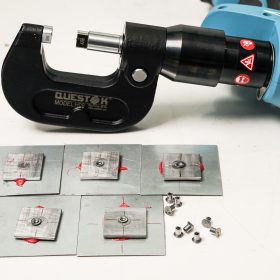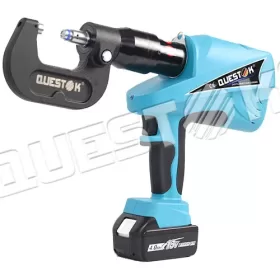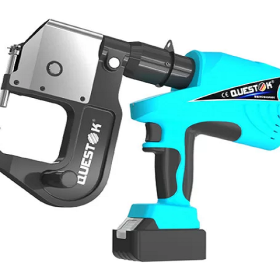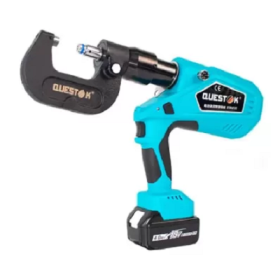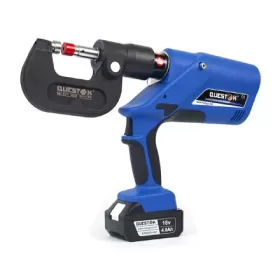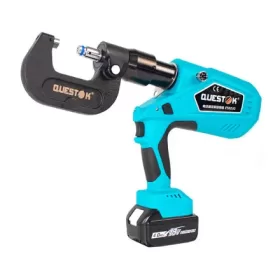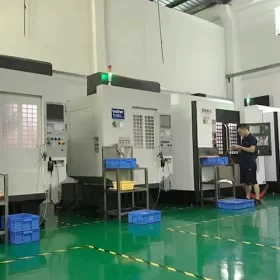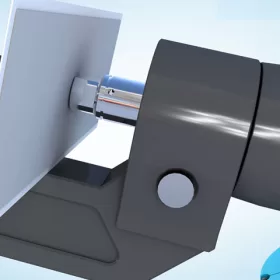Self-Riveting Machines vs. Traditional Riveting- A Comparative Analysis
In the dynamic realm of manufacturing, the riveting process has undergone a technological metamorphosis. Self-riveting machines, a revolutionary innovation, have challenged the dominance of traditional riveting methods, sparking a captivating debate among industry experts. This comparative analysis delves into the intrinsic advantages and limitations of each approach, empowering manufacturers to make informed decisions and optimize their operations.
Traditional Riveting: A Time-Tested Approach
Traditional riveting, a centuries-old technique, involves the manual insertion and hammering of rivets to secure two or more pieces of material together. Despite its simplicity, this method has distinct drawbacks, including:
Labor-Intensive: Requires skilled operators and is highly time-consuming.
Repetitive Strain Injuries (RSIs): Hammering can cause ergonomic issues for workers.
Inconsistent Join Strength: Variations in operator technique can compromise the strength and quality of the joint.
Self-Riveting Machines: A Technological Advance
Self-riveting machines, on the other hand, offer a modern alternative to traditional riveting. These automated systems utilize a self-contained rivet-setting mechanism to insert and set rivets with minimal human intervention. Key benefits of self-riveters include:
Increased Efficiency: Swiftly and accurately sets hundreds of rivets per minute, enhancing productivity.
Ergonomic Benefits: Eliminates manual hammering, reducing the risk of RSIs.
Precise Join Strength: Consistent and reliable results due to standardized riveting parameters.
Comparative Advantages and Limitations
Efficiency: Self-riveters excel in high-volume applications where speed and consistency are paramount. Traditional riveting remains suitable for small-scale or custom operations.
Ergonomics: Automated riveting eliminates the physical strain associated with manual hammering, improving employee comfort and well-being.
Quality and Reliability: Self-riveters ensure consistent joint strength and quality, while traditional riveting can be susceptible to variations.
Cost: Self-riveters require a higher initial investment but can offer long-term cost savings through increased efficiency and reduced labor costs.
Conclusion
The choice between self-riveting machines and traditional riveting hinges on the specific requirements of a manufacturing operation. For high-volume, automated applications, self-riveters provide unparalleled efficiency and ergonomic benefits. Traditional riveting remains a viable option for small-scale or specialized applications where cost or custom requirements are more critical. By leveraging the insights provided in this comparative analysis, manufacturers can optimize their riveting processes, maximizing productivity, quality, and overall operational efficiency.
- Company News
- Industry News
- Tag
- Tags
-
The Advantages of Questok Rivet Guns: Precision, Efficiency, and Durability
In industrial fastening applications, the choice of tools directly impacts productivity, safety, and long-term cost-effectiveness. Questok rivet guns have emerged as a standout solution for professionals across aerospace, automotive, and construction sectors. Combining advanced engineering with user-centric design, these tools deliver unmatched performance. Below are the key advantages that make Questok rivet guns a preferred choice:
-
Rivet Gun FAQ
Rivet Gun FAQ-SPR
-
Fast Assembly and Repair With Cordless Solid Rivet Gun
Questok cordless solid rivet gun stands out as a pivotal innovation, merging portability with power to facilitate efficient and effective fastening in a myriad of applications.
-
Redifine The Role of Self-piercing Riveting Gun Machine
Self-piercing riveting adopts high-speed mechanical fastening skill that joins thin sheet materials, typically steel and aluminum alloys.
-
The Latest Innovations in Clinching Tool Design
Explore the latest innovations in clinching tool design, redefining precision, efficiency, and versatility in material joining.
-
The Application and Maintenance of Self-Piercing Rivet Guns
Delve into the applications of self-piercing rivet guns in the automotive and aerospace industries and reveal the essential maintenance practices that ensure their accuracy and efficiency.
-
Rivetless Riveting Gun for Ventilation Duct Projects
The ventilation duct rivetless gun is a tool for riveting ventilation ducts without rivets.
-
Guide to Using Self-Piercing SPR Riveting Gun
In the automotive industry, self-piercing SPR (Self-Piercing Rivet) riveting guns are commonly used for joining metal components in vehicle bodies, including BMW vehicles.
-
Rivet Gun FAQ
Rivet Gun FAQ-SPR
-
User-Friendly Features- Making Riveting Easy with Electric Blind Rivet Guns
Electric blind rivet guns are essential tools for industrial applications, providing a convenient and efficient way to fasten materials together. These tools have significantly advanced, incorporating user-friendly features that enhance their functionality and ease of operation. This article explores several key user-friendly features of electric blind rivet guns, highlighting how they simplify and streamline the […]
-
Unleashing Potential- Unlocking the Versatility of a Handheld Rivet Gun
In the realm of construction and fabrication, precision and efficiency reign supreme. Among the indispensable tools that empower craftsmen and DIY enthusiasts alike, the handheld rivet gun stands as a beacon of versatility and innovation. This unassuming device harbors a hidden potential that belies its compact form, offering a plethora of applications that unlock unbounded […]
-
Versatile Fastening- Applications of the Handheld Rivet Gun Across Industries
In the realm of fastening, the handheld rivet gun stands as a testament to ingenuity and versatility. Its ability to effortlessly join materials with sheer strength and permanence has revolutionized manufacturing and construction processes, leaving an enduring mark on diverse industries. Aerospace: Where precision and reliability are paramount, the rivet gun shines. In aircraft assembly, […]
-
The Role of Automation in Electric Rivetless Clinching
Electric rivetless clinching (ERC) is a lightweight joining process that eliminates the need for rivets or other fasteners. This can lead to significant cost savings and increased production efficiency. Automation plays a critical role in ERC, enabling high-speed and high-volume production. Automated Feed Systems Automated feed systems are used to accurately position the two workpieces […]
-
Why Choose a Universal Self-Piercing Riveting Gun for Your Projects?
In the realm of construction and fabrication, riveting guns stand as indispensable tools for creating secure and robust connections. Among the various types available, universal self-piercing riveting (SPR) guns have emerged as a game-changer due to their versatility and efficiency. This article will delve into the compelling reasons why choosing a universal self-piercing riveting gun […]
-
Why Choose Stainless Steel Hollow Rivets for Your Projects?
In the world of industrial manufacturing, choosing the right fasteners for your projects is crucial for ensuring longevity and reliability. Among the many options available, stainless steel hollow rivets stand out as a superior choice for a wide range of applications. This article delves into the compelling reasons why stainless steel hollow rivets are the […]
-
Top Trends in Electric Rivetless Clinching Guns
In the realm of fastening technology, electric rivetless clinching guns have emerged as a revolutionary solution for a wide range of industrial applications. These advanced tools offer several преимущества and capabilities, revolutionizing the way businesses approach their fastening needs. Adoption of Brushless Motors Brushless motors have gained significant traction in electric rivetless clinching guns due […]
